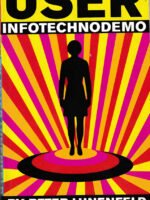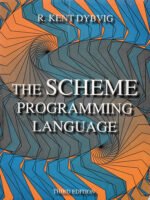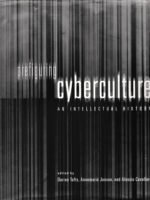-
Applied Electronics – A First Course in Electronics
₹2,706.00A basic text covering the physical phenomena involved in electronic conduction; ways in which these phenomena combine to govern the characteristics, ratings, and limitations of electronic devices; and applications of electronics to the various branches of electrical engineering.
₹8,199.00 -
Advances in Neural information Processing Systems 19
₹2,855.00The annual Neural Information Processing Systems (NIPS) conference is the flagship meeting on neural computation and machine learning. It draws a diverse group of attendees — physicists, neuroscientists, mathematicians, statisticians, and computer scientists — interested in theoretical and applied aspects of modeling, simulating, and building neural-like or intelligent systems.
₹8,650.00 -
Industrial Strength Design
₹1,876.00This concept has since been blamed for everything from toasters that stop working to today’s throwaway culture, but Stevens was simply recognizing the intentionally ephemeral nature of a designer’s work. Asked once to name his favorite design, he replied, “none, because every one would have to be restudied for the tastes of tomorrow.” This book, which accompanied an exhibit at the Milwaukee Art Museum (the repository for Stevens’s papers), includes 250 illustrations of designs by Stevens and his firm, many in color. Glenn Adamson, exhibition curator, contributes detailed studies of individual designs. John Heskett, Kristina Wilson, and Jody Clowes contribute interpretive essays. Also included are a description of the Brooks Stevens Archive and several key writings by Brooks Stevens.
₹4,250.00 -
HCI Remixed: Reflections on Works That Have Influenced the HCI Community
₹1,479.00Over almost three decades, the field of human-computer interaction (HCI) has produced a rich and varied literature. Although the focus of attention today is naturally on new work, older contributions that played a role in shaping the trajectory and character of the field have much to tell us. The contributors to HCI Remixed were asked to reflect on a single work at least ten years old that influenced their approach to HCI.
₹4,350.00 -
The MIT Encyclopedia of Communication Disorders
₹3,564.00The Clinical Management subsection describes appropriate interventions, including behavioral, pharmacological, surgical, and prosthetic. Because the approach to communication disorders can be quite different for children and adults, many topics include separate entries reflecting this. Although some disorders that are first diagnosed in childhood may persist in some form throughout adulthood, many disorders can have an onset in either childhood or adulthood, and the timing of onset can have many implications for both assessment and intervention. Topics covered in MITECD include cochlear implants for children and adults, pitch perception, tinnitus, alaryngeal voice and speech rehabilitation, neural mechanisms of vocalization, holistic voice therapy techniques, computer-based approaches to children’s speech and language disorders, neurogenic mutism, regional dialect, agrammatism, global aphasia, and psychosocial problems associated with communicative disorders.
₹10,799.00 -
Wired for Speech
₹1,068.00It considers how people respond to a female voice in e-commerce (does stereotyping matter?), how a car’s voice can promote safer driving (are “happy” cars better cars?), whether synthetic voices have personality and emotion (is sounding like a person always good?), whether an automated call center should apologize when it cannot understand a spoken request (“To Err is Interface; To Blame, Complex”), and much more. Nass and Brave’s deep understanding of both social science and design, drawn from ten years of research at Nass’s Stanford laboratory, produces results that often challenge conventional wisdom and common design practices. These insights will help designers and marketers build better interfaces, scientists construct better theories, and everyone gain better understandings of the future of the machines that speak with us.
₹3,050.00 -
User
₹900.00Pondering the “permanent present” of today’s visual culture, Lunenfeld blames the twenty-first century’s inability to imagine the future on a movie and an interface: the too-influential aesthetic of Blade Runner and the ubiquitous desktop of nested files, icons, trash cans, and cascading windows, he argues, have become impediments to our thinking beyond the present. Lunenfeld writes about Euro-Disney, Matthew Barney, the VHS pornucopia that killed off Betamax, the computer as a “solitude enhancement machine,” our embarrassing Y2K hysteria (when TEOTWAWKI??The End of the World As We Know It??didn’t happen), and other faces of what he calls “that overwhelming diversity which for lack of a better term we call the present.”
₹2,500.00 -
The Reasoned Schemer
₹1,190.00Familiarity with a functional language or with the first eight chapters of The Little Schemer is assumed. Adding logic capabilities required the introduction of new forms. The authors’ goal is to show to what extent writing logic programs is the same as writing functional programs using these forms. In this way, the reader of The Reasoned Schemer will come to understand how simple logic programming is and how easy it is to define functions that behave like relations.
₹3,499.00 -
Health Economics
₹3,333.00This book introduces students to the growing research field of health economics. Rather than offer details about health systems without providing a theoretical context, Health Economics combines economic concepts with empirical evidence to enhance readers’ economic understanding of how health care institutions and markets function.
₹7,750.00 -
The Scheme Programming Language
₹1,190.00Most of the remaining chapters are dedicated to the reference material, which describes in detail the standard features of Scheme included in the Revised Report on Scheme and the ANSI/IEEE standard for Scheme.Numerous examples are presented throughout the introductory and reference portions of the text, and a unique set of extended example programs and applications, with additional exercises, are presented in the final chapter. Reinforcing the book’s utility as a reference text are appendixes that present the formal syntax of Scheme, a summary of standard forms and procedures, and a bibliography of Scheme resources. The Scheme Programming Language stands alone as an introduction to and essential reference for Scheme programmers. It is also useful as a supplementary text for any course that uses Scheme.The Scheme Programming Language is illustrated by artist Jean-Pierre Hebert, who writes Scheme programs to extend his ability to create sophisticated works of digital art.
₹3,499.00 -
Prefiguring Cyberculture: An Intellectual History
₹998.00A multidisciplinary compilation of essays and other writings explores the antecedents of Internet technology in the works of Plato, Aristotle, Descartes, Mary Shelley, William Gibson, and others. (Technology)
₹2,850.00 -
Essays on the Representational and Derivational Nature of Grammar
₹936.00This book can be read on two levels: as a novel empirical study of wh- interrogatives and relative constructions in a variety of languages and as a theoretical investigation of chain formation in grammar.
₹2,599.00
- Home
- Categories
- Architecture
- Agriculture and Farming
- Business & Management
- Engineering
- Fashion & Textiles
- General and References
- Humanities & Social Science
- Islam
- Library Science
- Literature & Literary Studies
- Mathematics & Statistics
- Media, Information & Communication Industries
- Medicine
- New Arrivals
- On Sale
- Science & Technology
- Sports
- Top Selling
- Travel & Tourism
- Annual Reviews
- Exclusive
- Blog
- Others






















